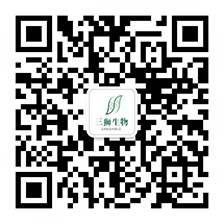Real-time fluorescence quantitative PCR technology refers to adding fluorescent dyes or fluorescent groups to the PCR reaction system, using fluorescent signals to monitor the entire PCR process in real time, and quantitatively analyzing the concentration of unknown templates through a standard curve.

Its features are:
(1) Use an indicator that generates a fluorescent signal to display the amount of amplified product, perform real-time dynamic and continuous fluorescence monitoring, avoid inaccuracy in end-point quantification, and eliminate the contamination of specimens and products, and there is no complicated product follow-up process. .
(2) Fluorescent signals are obtained by intercalating fluorescent dyes into double-stranded DNA, or by specific binding of fluorescent probes to wood detection substances, which improves the sensitivity, specificity and accuracy of detection. Real-time O-PCR can be applied to the study of mRNA expression, the detection of DNA copy number, the determination of single nucleotide polymorphism, the expression analysis of cytokines, the study of tumor resistance gene expression and the quantitative monitoring of virus infection.
The basic principle of real-time fluorescence quantitative PCR technology
Fluorescent dyes or fluorescent groups are added to the PCR reaction system, and these fluorescent substances have their specific wavelengths. The instrument can automatically detect and use the accumulation of fluorescent signals to monitor the entire PCR process in real time. In the PCR cycle, the measured signals will be used as the coordinates of the fluorescence threshold. And introduce a concept - Ct value (Threshold cycle), Ct value refers to the number of small cycles required to generate a detectable fluorescent signal, which is caused by the inflection point of the fluorescent signal from the background to the exponential growth stage during the PCR cycle. the corresponding number of cycles.
The fluorescence threshold corresponds to 10 times the mean signal standard deviation of the baseline fluorescence signal. It is generally considered that the fluorescence signal detected above the fluorescence threshold is a credible signal and can be used to define the Ct value of a sample. The Ct values of standard samples at different concentrations are usually used to generate a standard curve, and then the relative equation is calculated.
The slope of the equation can be used to check the efficiency of PCR. All linear regression analysis of standard curves needs to have a high correlation coefficient (R²>0.99), so that the experimental process and data can be considered credible. Use this equation to calculate the unknown The initial template amount for the sample. Real-time PCR instruments have software that can automatically calculate the initial template amount for unknown samples from the standard curve.

Location: Science and Technology Center, High-tech Zone, Shijiazhuang City, Hebei Province
Business Hotline: 186-3213-6937
Headquarters Tel: 0311-82970259
Email: sanshibio@126.com
